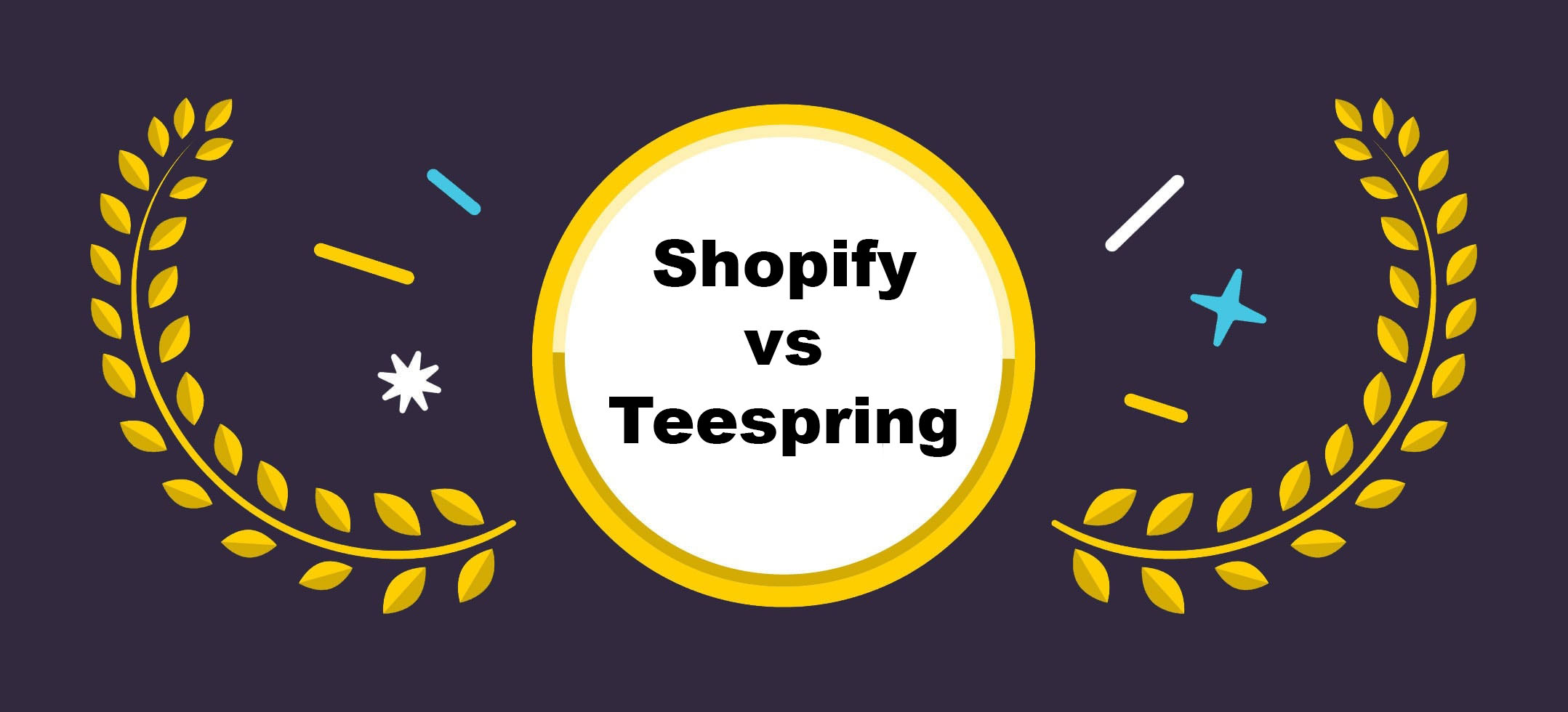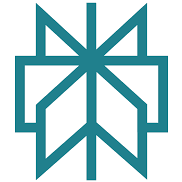Here’s my comparison of Shopify and Teespring to help you decide which one is best for your custom merchandise.
After all my research and testing I can confidently say Shopify is the better option for those looking to build a long term brand with a fully custom print on demand store.
It’s got sales features, multichannel integration and branding tools for serious ecommerce entrepreneurs.
But Teespring has an advantage for creators and influencers who want a quick and easy way to sell print on demand products.
No setup fees and end to end fulfillment makes it perfect for those testing the waters of merchandise sales without the commitment of a full ecommerce store.
Both platforms are good at different things and the right choice depends on your business goals. Let’s get into the details to see how they compare.
Verdict: Shopify vs. Teespring
If you’re building a long term ecommerce brand and need a flexible, scalable platform with lots of customization options, Shopify is the winner. For businesses who want to manage their own store and brand.
On the other hand Teespring is for creators or influencers who want a easy solution to sell custom merchandise with no setup and no upfront costs.
Shopify Pros and Cons
Pros:
- Fully customisable store themes and layouts
- 6,000+ app integrations
- Advanced SEO and marketing tools
- Multi channel selling across marketplaces and social platforms
- 24/7 support
- Scalable for all business sizes
Cons:
- Monthly subscription fees from $29
- More time and effort to set up and manage
- Transaction fees unless you use Shopify Payments
Teespring Pros and Cons
Pros:
- No upfront costs—perfect for low risk ventures
- Easy design tools to create custom products
- Handles production, shipping and customer support
- Good for influencers with built in integrations (e.g. YouTube Merch Shelf)
- Can test new designs with no inventory
Cons:
- Limited storefront customization
- Higher profit share compared to owning your store
- Less control over branding and customer relationships
Shopify
Shopify is an ecommerce platform for entrepreneurs to start and grow their online business. I’ll go over its features, pricing and position in the market.
What is Shopify?

Shopify is a full ecommerce solution for merchants to create and manage online stores. It has tools to sell products, process payments and ship products.
For businesses of all sizes, from small startups to large enterprises.
Shopify has a user friendly interface so even non techy people can use it. It integrates with many third party apps and services to extend its functionality.
Shopify Features
- Customisable store themes
- Secure payment processing
- Inventory management
- Order fulfillment tools
- SEO
- Mobile commerce
- Multi channel selling (social media, marketplaces)
- Analytics and reporting
These features help merchants create a professional store and streamline their business. Shopify also has 24/7 support to help with any questions or issues.
Pricing
Shopify has tiered pricing plans for different business needs:
- Basic Shopify: $39/month
- Shopify: $105/month
- Advanced Shopify: $399/month
Each plan includes core ecommerce features, more features in higher plans and lower transaction fees. Shopify also has a 3 day free trial for new users, followed by the first 3 months for $1/month.
Custom plans available for larger businesses with special needs, with Shopify Plus.
Position in the Market
Shopify is well placed in the ecommerce market. Its user friendly interface and many features make it a top choice for many entrepreneurs and established businesses.
It competes with other ecommerce solutions like WooCommerce, BigCommerce and Magento. Shopify’s strength is its ease of use, scalability and app ecosystem.
I’ve noticed Shopify’s market share is growing especially among small to medium sized businesses. Its full ecommerce solution is the reason for its success in the market.
Teespring
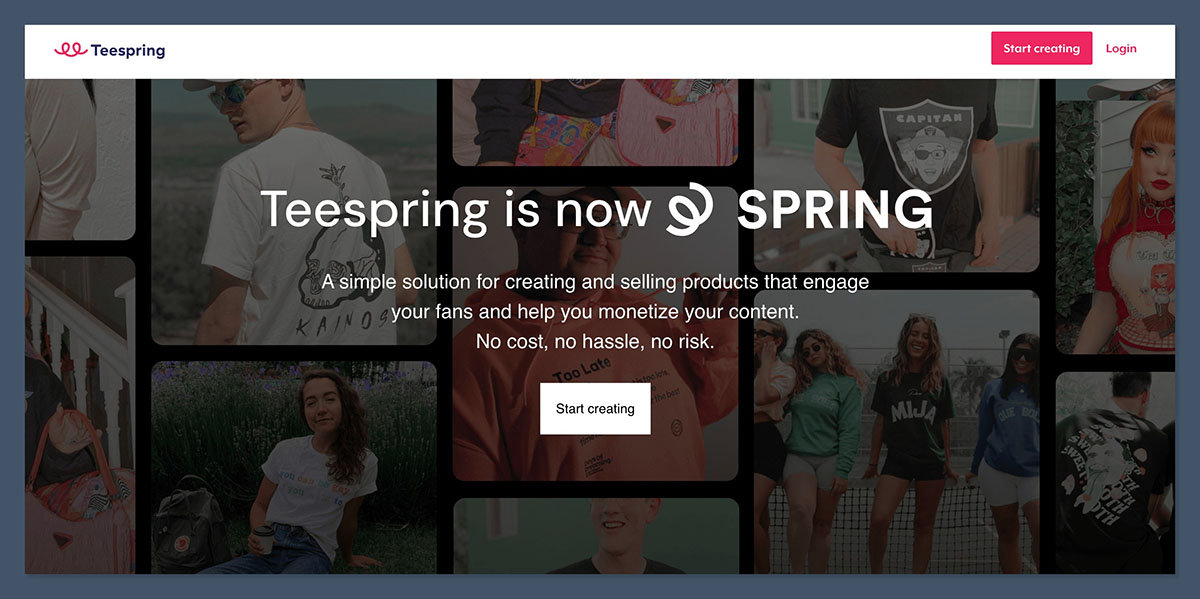
Teespring is a print on demand platform where creators can design and sell custom merchandise. I’ll go over its features, pricing and unique selling points.
What is Teespring?
Teespring is an ecommerce platform where individuals and businesses can create and sell custom products with no upfront cost or inventory management.
I find it perfect for artists, influencers and entrepreneurs who want to monetise their brand or idea.
Users can design t-shirts, hoodies, mugs and other products using Teespring’s design tools or upload their own artwork. Teespring handles production, shipping and customer support so it’s a hassle free option for sellers.
Teespring’s user friendly interface and social media integration has made it popular among content creators.
Teespring Features
Teespring has many features for creators:
- Design Tool: Easy to use design interface
- Product Variety: Many products to customise, from apparel to accessories
- Fulfilment Services: Production, packaging and shipping
- Marketing Tools: Integration with social media and advertising platforms
- Analytics Dashboard: Sales, traffic and campaign performance tracking
I like that Teespring is committed to quality, using premium materials and printing methods to ensure customer satisfaction. They also have seller support and resources to help users optimise their campaigns and increase sales.
Teespring Pricing
Teespring is a profit sharing model, no upfront cost for sellers. Here’s how it works:
- Sellers set their retail price
- Teespring deducts base cost (production, shipping, fees)
- Remaining amount is the seller’s profit
I like this model for new entrepreneurs as it minimises financial risk. Profit margins vary depending on the product and retail price.
Teespring has volume discounts so more profit for successful campaigns.
Unique Selling Point
Teespring’s unique selling point is its ease of use and full service. I think it stands out for:
- No Upfront Cost: Creators can launch products with no financial investment
- End to End Solution: Design, production, shipping and customer support
- Integration: Seamless connection with social media and ecommerce platforms
- Scalability: Can handle small and big order volume
Teespring’s focus on creators and user friendly approach makes it a great option for those who want to get into custom merchandise.
E-Commerce Business Models
Shopify and Teespring have different e-commerce business models to suit different business needs and target market. I’ll go over each platform’s model.
Shopify Business Model
Shopify is an ecommerce platform that provides tools for businesses to create and manage online stores. I found it to be a subscription based model with tiered pricing plans. These plans include website hosting, payment processing and inventory management.
Shopify earns money through monthly subscription fees and transaction fees on sales. They also have additional services and apps in their ecosystem to create multiple revenue streams. They cater to businesses of all sizes, from small startups to big corporations.
One of Shopify’s strength is its flexibility. Sellers can customise their store and sell many products. This flexibility has made it popular among many businesses.
Teespring Business Model
Teespring is a print on demand service, mainly for custom apparel and merchandise. I found it to be different from Shopify, no upfront cost for sellers.
The platform earns money by taking a cut of each sale. Sellers set their price and Teespring handles production, shipping and customer support. This model is great for creators and influencers who want to sell branded merchandise without inventory management.
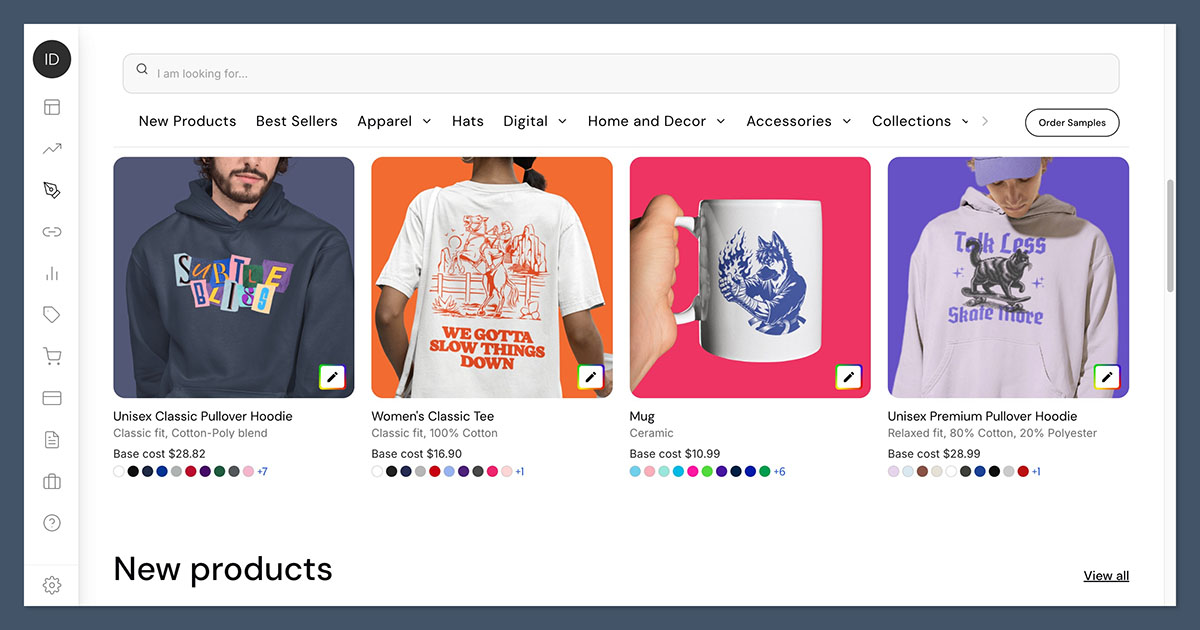
Teespring’s business model is all about minimising risk for sellers. It only produces items when orders are placed, no inventory management needed. This allows for easy testing of designs and products.
The platform has added more product types and social media integrations to make it more appealing to content creators.
Customisation
Shopify and Teespring have different ways of customising products and stores. I’ll go over the options for each platform to customise designs and create unique stores.
Shopify Customisation
Shopify has extensive customisation options for online stores. I can choose from over 70 professional themes, each with its own style and layout options. These themes are fully customisable, I can change colours, fonts and layouts to match my brand.

Shopify’s drag and drop editor allows me to add and rearrange content blocks. I have control over product pages, I can add custom description, images and variants.
For advanced customisation, I can access and edit the HTML and CSS of my store. This gives me full control to create a unique look and feel.
Teespring Design Flexibility
Teespring is about customising individual products not entire stores. Their design tool is user friendly and intuitive for custom apparel and accessories.
I can upload my own artwork or use Teespring’s library of fonts and graphics. They support various printing methods, all over prints and embroidery.
Teespring has a wide colour palette, I can match my brand colours exactly. I can create multiple variations of a single design, offer customers different colour options.
Teespring’s store customisation is limited compared to Shopify but I can add basic branding elements like logos and banners.
User Experience
Shopify and Teespring have different user experience for creating and managing online stores. I’ll go over their interfaces and key features that affect user experience.
Shopify User Interface
Shopify’s user interface is very intuitive and user friendly, easy to get your store up and running.
The dashboard is clean with a left sidebar menu that categorises orders, products and analytics for easy access.
One of the best features is how Shopify integrates with print on demand (POD) apps like Printful and Printify.
Adding new products is super easy—once a POD app is connected, you can import and customise products directly from the app into your store.
The product editor is simple, with fields for titles, descriptions and multiple image uploads.
Combined with Shopify’s live visual editor for themes, you can create a professional looking store even if you have no coding skills.
The drag and drop customisation makes changes quick and easy, so my store looks exactly how I want it.
Teespring User Experience
Teespring is about a simple process to create and sell custom merchandise. The platform guides me through a product creation process.
I start by choosing a product type, then use Teespring’s design tool to add text and images. The tool is easy to use but has fewer customisation options than some advanced design software.
Teespring’s campaign setup is easy, with clear fields for price, description and goals. I find the interface clean and simple, so I can focus on the important stuff.
Integrations
Both Shopify and Teespring have integrations and partnerships to supercharge their platforms. These features help users to reach more and streamline their business.
Shopify Integrations
Shopify has an app marketplace with over 6,000 integrations.

I found these integrations covers a wide range of functionality from marketing to inventory management. Here are some popular ones:
- Social media integrations (Facebook, Instagram, TikTok)
- Email marketing tools (Mailchimp, Klaviyo)
- Accounting software (QuickBooks, Xero)
Shopify’s API also allows custom integrations, so developers can build custom solutions. This powerful ecosystem allows merchants to automate and scale.
Teespring Collaboration
Teespring is now called Spring and is about creator partnerships and collaborations. I found they have:
- YouTube Merch Shelf integration
- Twitch Extensions for streamers
- Integrations with Linktree and Patreon
These collaborations allow content creators to sell merchandise to their audience. Spring’s print on demand model makes it easy, they handle production and fulfillment.
Perfect for influencers and artists who want to monetise their brand without inventory management.
Spring now integrates with Adobe Express, I can create custom merchandise with professional tools like templates and fonts.
I do need an Adobe Express account to use it, but it’s worth it for the high quality designs and smooth workflow. It’s a great way to make my merch stand out easily!
Marketing and Sales Tools
Shopify and Teespring have different marketing and sales tools to help creators promote their products. Each platform has its own features to help sellers reach their audience and sell.
Shopify Marketing Arsenal
Shopify gives me a full marketing suite. I can create and manage email campaigns from my dashboard, send personalised offers to customers. The platform integrates with social media channels so I can showcase products and run ads.
Shopify has built in SEO features to optimise my store for search engines. I can customise meta descriptions, URLs and alt tags to increase visibility.
Shopify also has abandoned cart recovery, sending automated reminders to customers who haven’t completed their purchase.
For analytics, Shopify gives me detailed reports on sales, traffic and customer behaviour. This data helps me to refine my marketing and make informed decisions.
Teespring Promotions
Teespring takes a different approach to marketing, they focus on their marketplace and social integrations. I can tap into Teespring’s existing customer base by having my products listed on their platform.
The site has tools to create mockups and product displays. I can share these on social media or use them in ads. Teespring also has a Boosted Network feature that promotes top selling designs across different channels.
For creators with large followings, Teespring has the Merch Shelf feature. I can showcase products directly on my YouTube channel, integrate merchandise with my content.
Support and Community
Both Shopify and Teespring have support and community but they approach it differently. Let’s see how each platform supports and encourages community engagement.
Shopify Support Network
I found Shopify’s support to be extensive and easily accessible. They have 24/7 customer support via phone, email and live chat. This is super helpful when I have an urgent issue with my store.
Shopify also has a massive knowledge base. It has detailed guides, video tutorials and FAQs. I often go to these resources for quick answers to my questions.
The Shopify community forums is another great resource. Here I can connect with other store owners, share my experience and get advice. Shopify experts often chime in with solutions to complex issues.
For more personalised support Shopify has a network of certified experts. These experts can help with store setup, customisation and optimisation.
Teespring Community
Teespring takes a different approach to support and community building. They focus more on peer to peer interactions and self service resources.
The Teespring community is centred around their forum. Here I can engage with other creators, share tips and discuss marketing strategies. It’s a great space for collaboration and idea sharing.
Teespring has a knowledge base with articles on design, marketing and platform features. Not as extensive as Shopify’s but covers most of what I need to know.
For direct support Teespring has email support. Response time can vary but I found their team to be helpful when I reach out.
Teespring also hosts occasional webinars and live Q&A sessions. These are great for getting valuable insights and to interact with Teespring staff.
How to Start Selling on Spring: Step-by-Step Guide
1. Sign Up for an Account
Go to Spring’s website and create a free account.
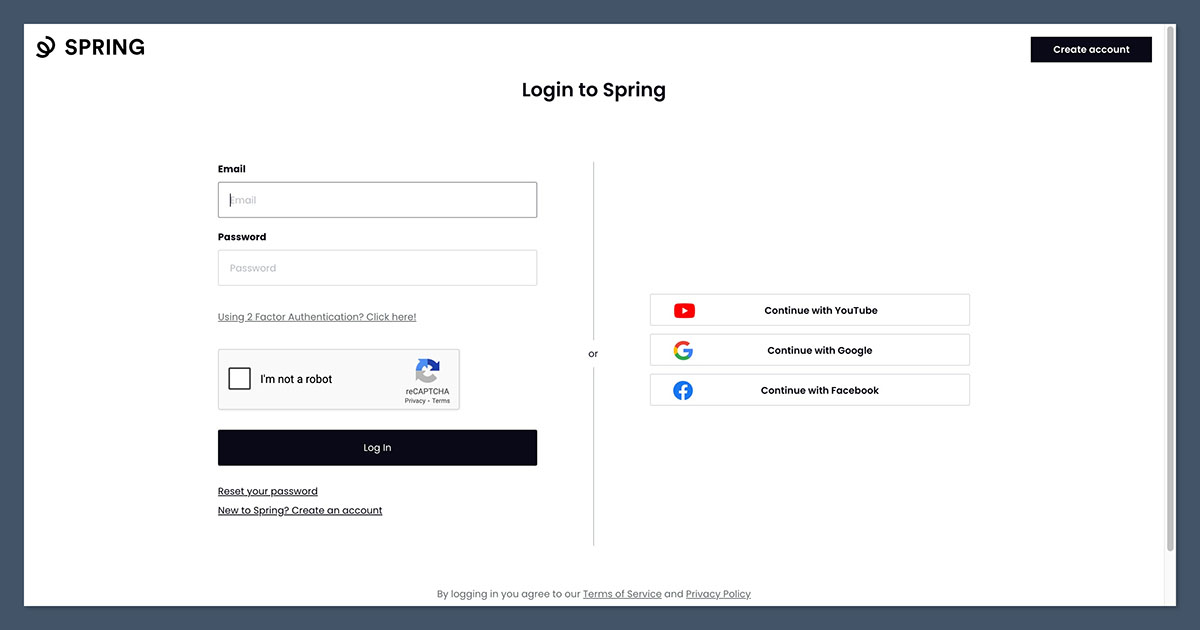
2. Set Up Your Store
Add your store name, profile picture and banner to customise your storefront.
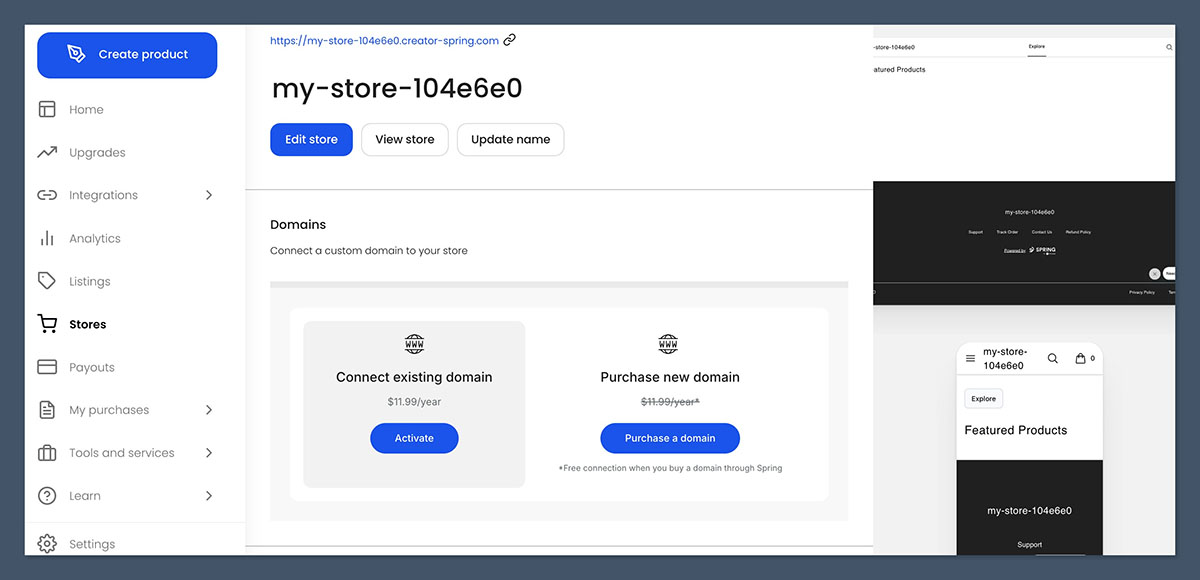
3. Create a Product:
- Choose from their product catalog (t-shirts, hoodies, mugs, etc.).
- Use Spring’s design tool to upload your artwork or create designs directly on the platform.
- Set product colours, sizes and styles.
4. Price Your Products
Enter your desired retail price. Spring will calculate your profit margin based on the base production cost
5. Publish Your Product
Finalise your design and add product details like titles and descriptions. Then, publish it to your store.
6. Promote Your Products
7. Share your store link on social media platforms
Use integrations like the YouTube Merch Shelf or Linktree to reach your audience.
9. Start Selling
Spring handles production, shipping and customer service so all you need to do is market and collect your profits!
Tip: Use the Adobe Express integration for professional designs if you have an account!
How to Start Selling Print-on-Demand (POD) Products on Shopify: Step-by-Step Guide
- Sign Up for Shopify
Go to Shopify’s website and sign up for a free trial or choose a plan to get started.
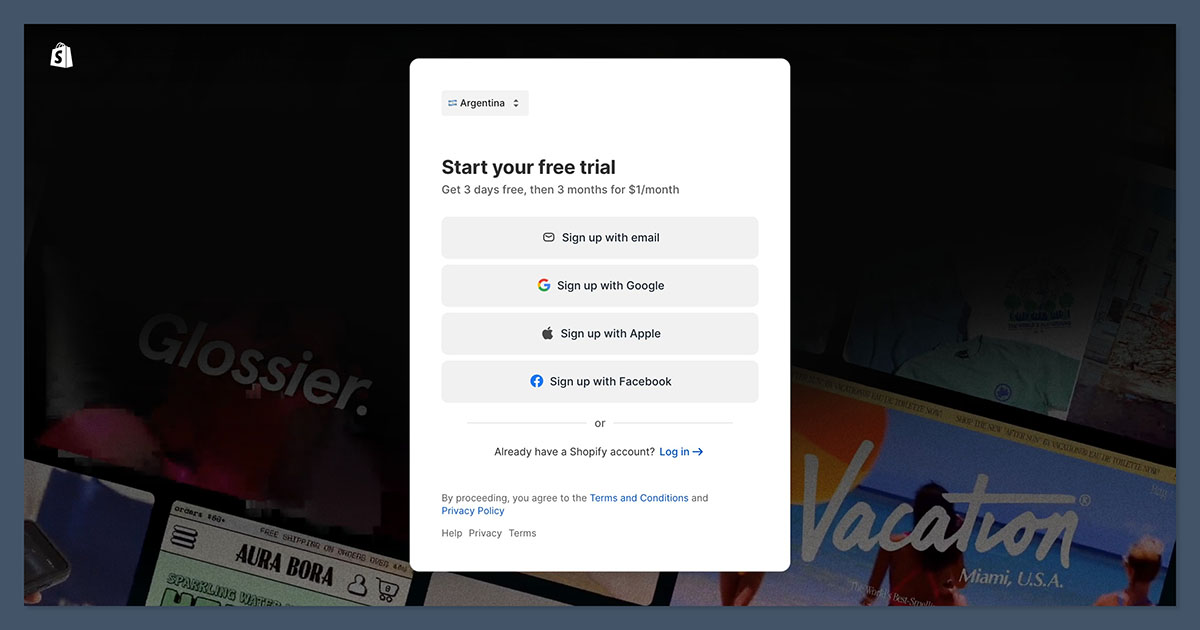
- Choose a theme for your store and customise it with your branding (logo, colours, fonts).
- Add essential pages like “About Us,” “Contact” and “FAQs.”
- Install a Print-on-Demand App
- Go to Shopify’s App Store and install a POD app like Printful, Printify or Gooten.
- Connect the app to your Shopify store to sync your products.
- Design Your Products
- Use the POD app’s design tool or upload your own designs.
- Choose products like t-shirts, mugs and phone cases to customise.
- Set product variants (sizes, colours, etc.).
- Set Prices and Profit Margins
- The POD app will show base costs.
- Set your retail price to determine your profit margin.
- Add Products to Your Store
- Sync your designed products to your Shopify store.
- Add product titles, descriptions and SEO-optimised tags for better visibility.
- Launch Your Store
- Finalise your store settings, including payment options and shipping rates.
- Preview your store to make sure everything looks professional.
- Promote Your Products
- Share your store on social media, email marketing and Shopify integrations like Facebook and Instagram Shopping.
- Use Shopify’s SEO tools to optimise your store for search engines.
- Start Selling
Shopify will process orders while your POD provider will handle production and shipping. Focus on growing your audience and sales!
Tip: Shopify has advanced analytics to track your store’s performance and optimise your marketing.
Success Stories and Case Studies
I’ve seen some awesome success stories from both Shopify and Teespring users. On Shopify I found the case of Gymshark, a fitness apparel brand that went from a garage startup to a billion dollar company.
Kylie Cosmetics is another Shopify success, they launched Kylie Jenner’s makeup line and it was a huge hit. The platform scaled with them as they grew and handled high volume sales.
For Teespring I found the case of a teacher who earned over $1 million selling t-shirts with funny phrases. Their designs went viral, proving what’s possible with Teespring for creators.
Another Teespring case is a YouTuber who made $40,000 in merch sales in 30 days. They used their existing audience to drive big revenue through the platform.
Here are the differences:
- Shopify: For building a full blown ecommerce brand
- Teespring: For creators monetising their audience
Both have enabled entrepreneurs to be successful but in different ways. Shopify is better for larger scale operations while Teespring is better for individual creators and influencers.
Conclusion
When choosing between Shopify and Teespring I would recommend you evaluate your specific needs and goals. Both have their own advantages for selling custom merchandise online.
Shopify gives you more control and customisation options to build a standalone ecommerce store. If I want to create a branded shopping experience and sell more than just print on demand products.
Teespring has a simpler setup process for custom apparel and accessories. Their integrated design tools and marketplace gets me up and running fast with minimal upfront costs.
Budget is another consideration. Shopify has monthly fees but I own my store. Teespring is free to use but takes a bigger cut of each sale.
I also need to think about my technical skills and time. Shopify requires more setup and management while Teespring handles most of the backend for me.
So neither is better. I choose the one that fits my business model, audience and long term goals for selling custom merchandise.
